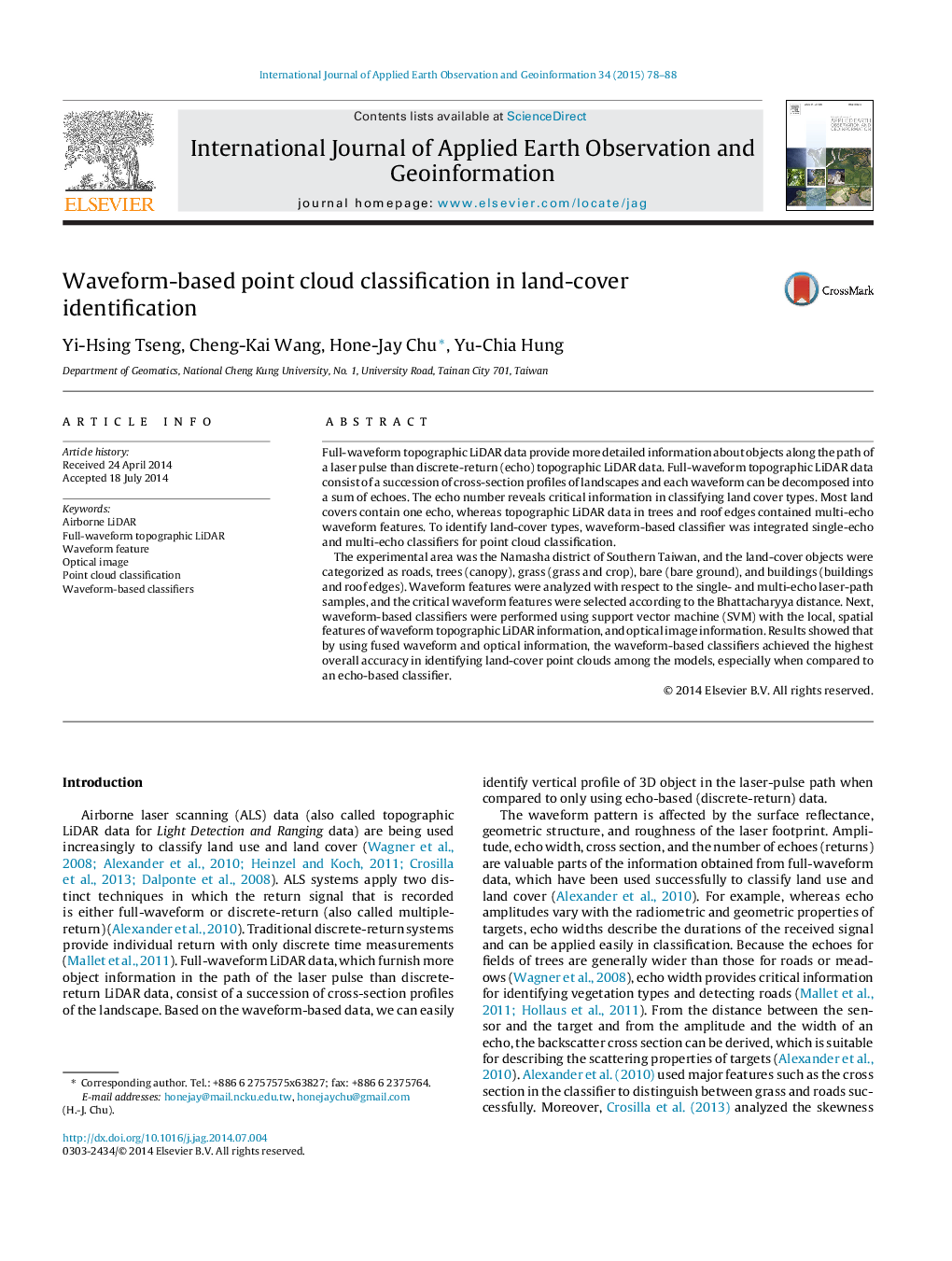| Article ID | Journal | Published Year | Pages | File Type |
|---|---|---|---|---|
| 6348726 | International Journal of Applied Earth Observation and Geoinformation | 2015 | 11 Pages |
Abstract
The experimental area was the Namasha district of Southern Taiwan, and the land-cover objects were categorized as roads, trees (canopy), grass (grass and crop), bare (bare ground), and buildings (buildings and roof edges). Waveform features were analyzed with respect to the single- and multi-echo laser-path samples, and the critical waveform features were selected according to the Bhattacharyya distance. Next, waveform-based classifiers were performed using support vector machine (SVM) with the local, spatial features of waveform topographic LiDAR information, and optical image information. Results showed that by using fused waveform and optical information, the waveform-based classifiers achieved the highest overall accuracy in identifying land-cover point clouds among the models, especially when compared to an echo-based classifier.
Related Topics
Physical Sciences and Engineering
Earth and Planetary Sciences
Computers in Earth Sciences
Authors
Yi-Hsing Tseng, Cheng-Kai Wang, Hone-Jay Chu, Yu-Chia Hung,
